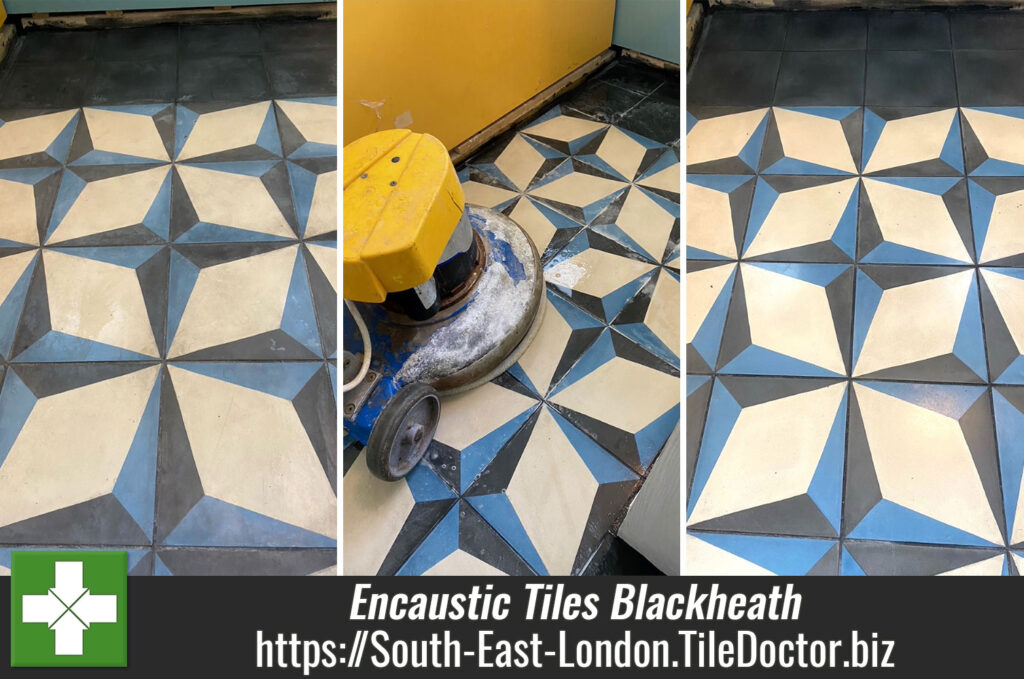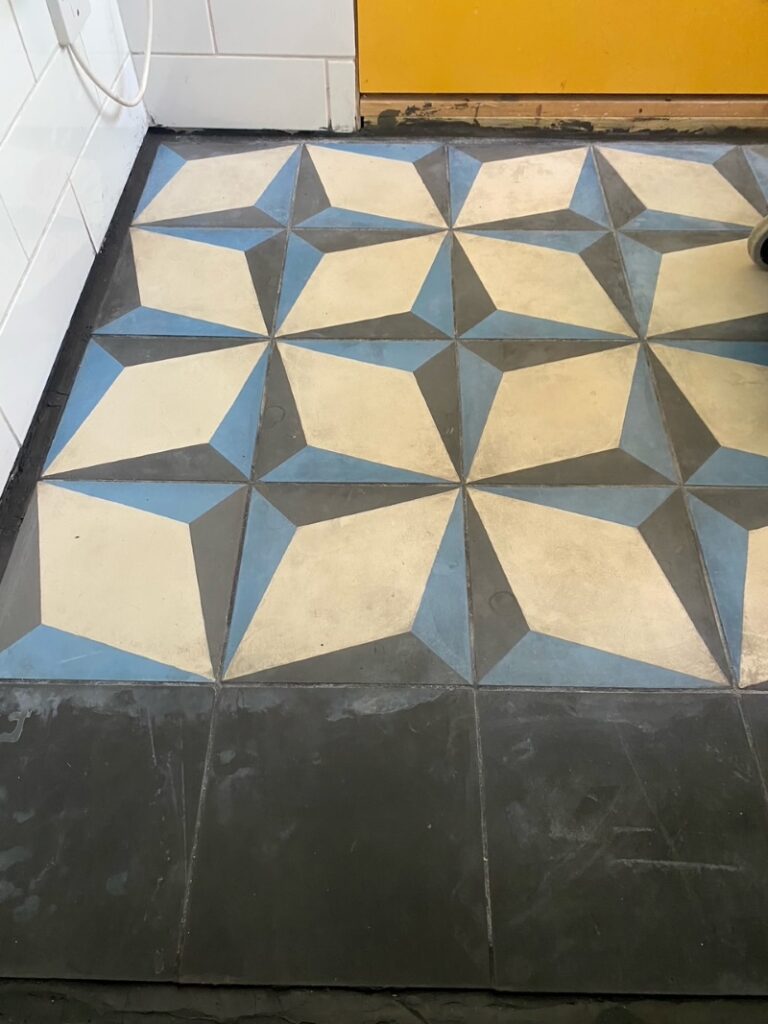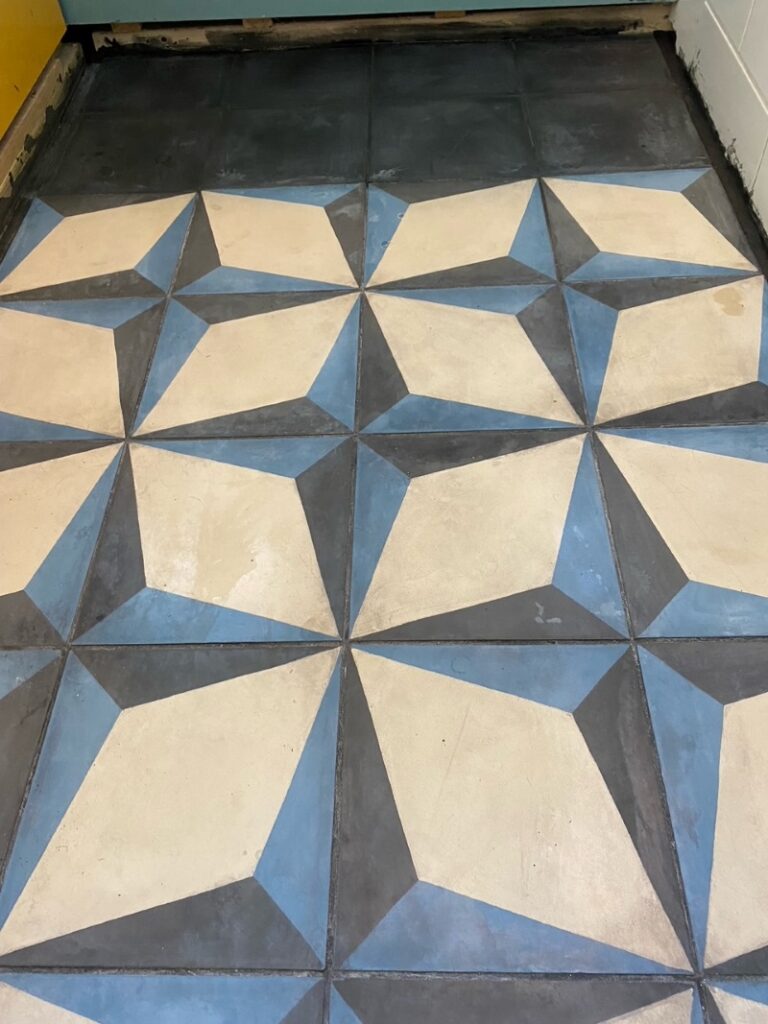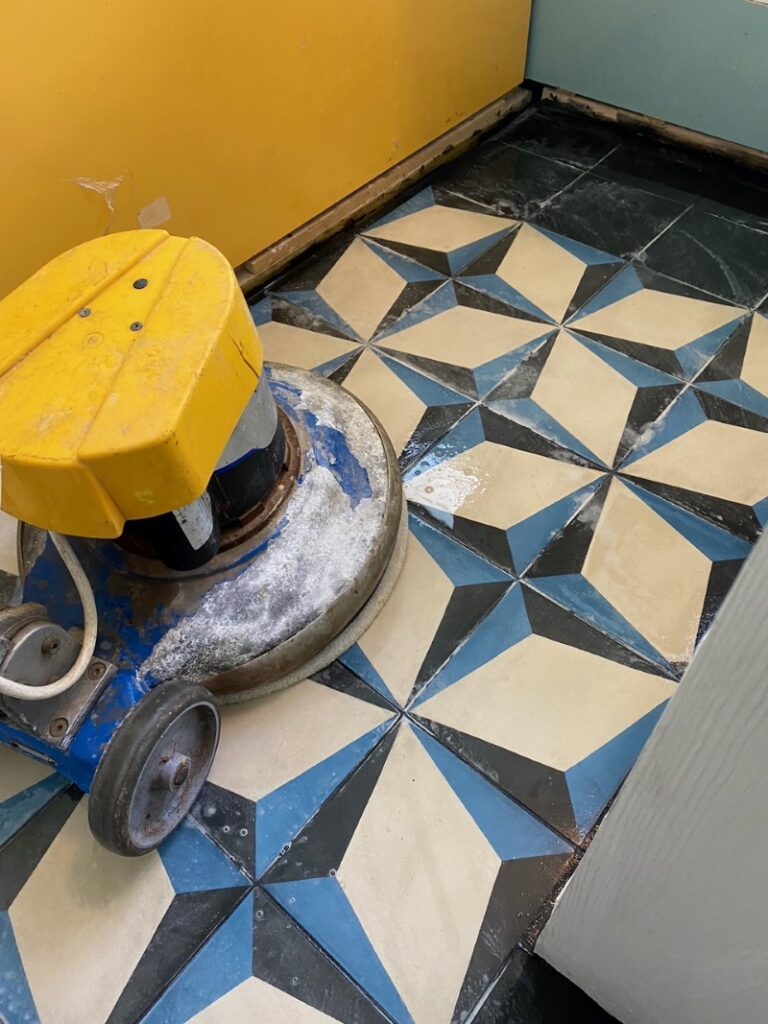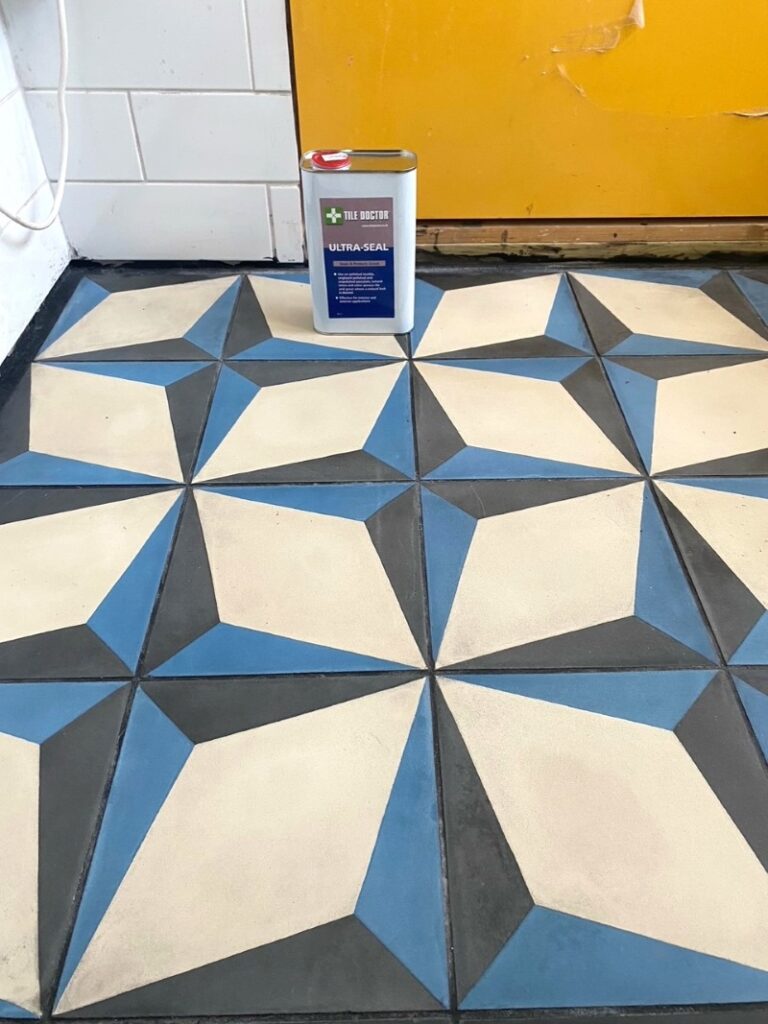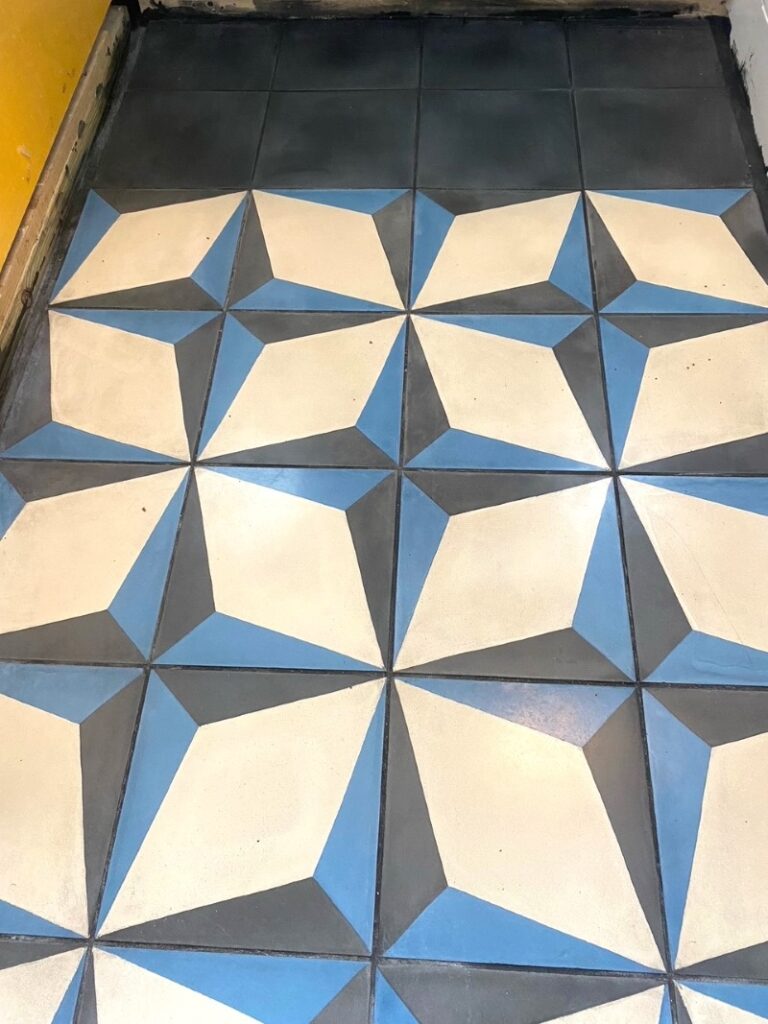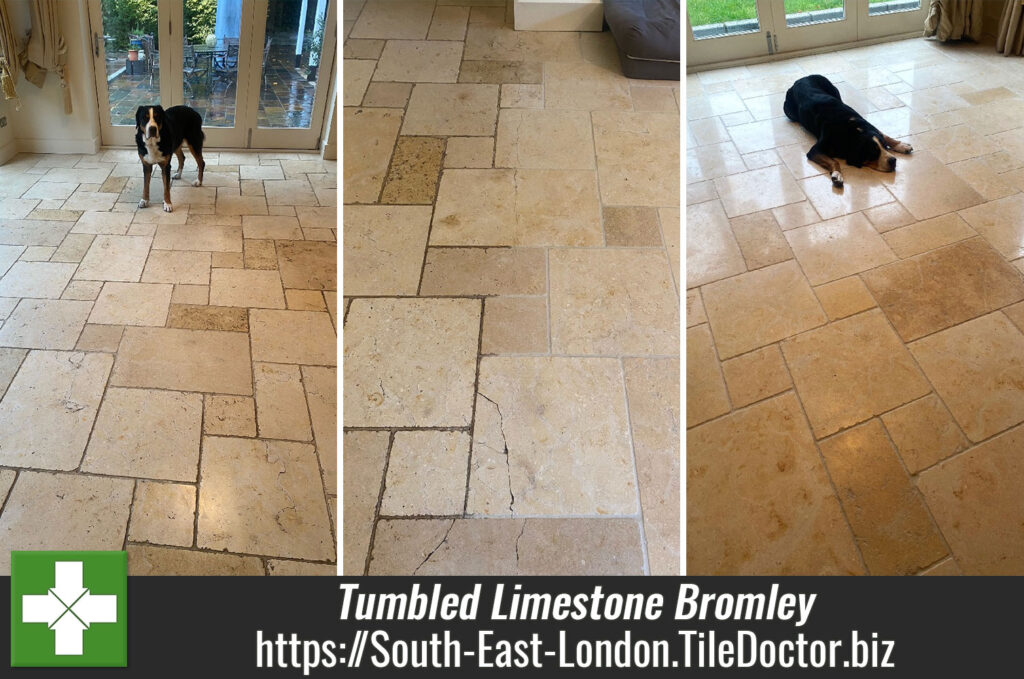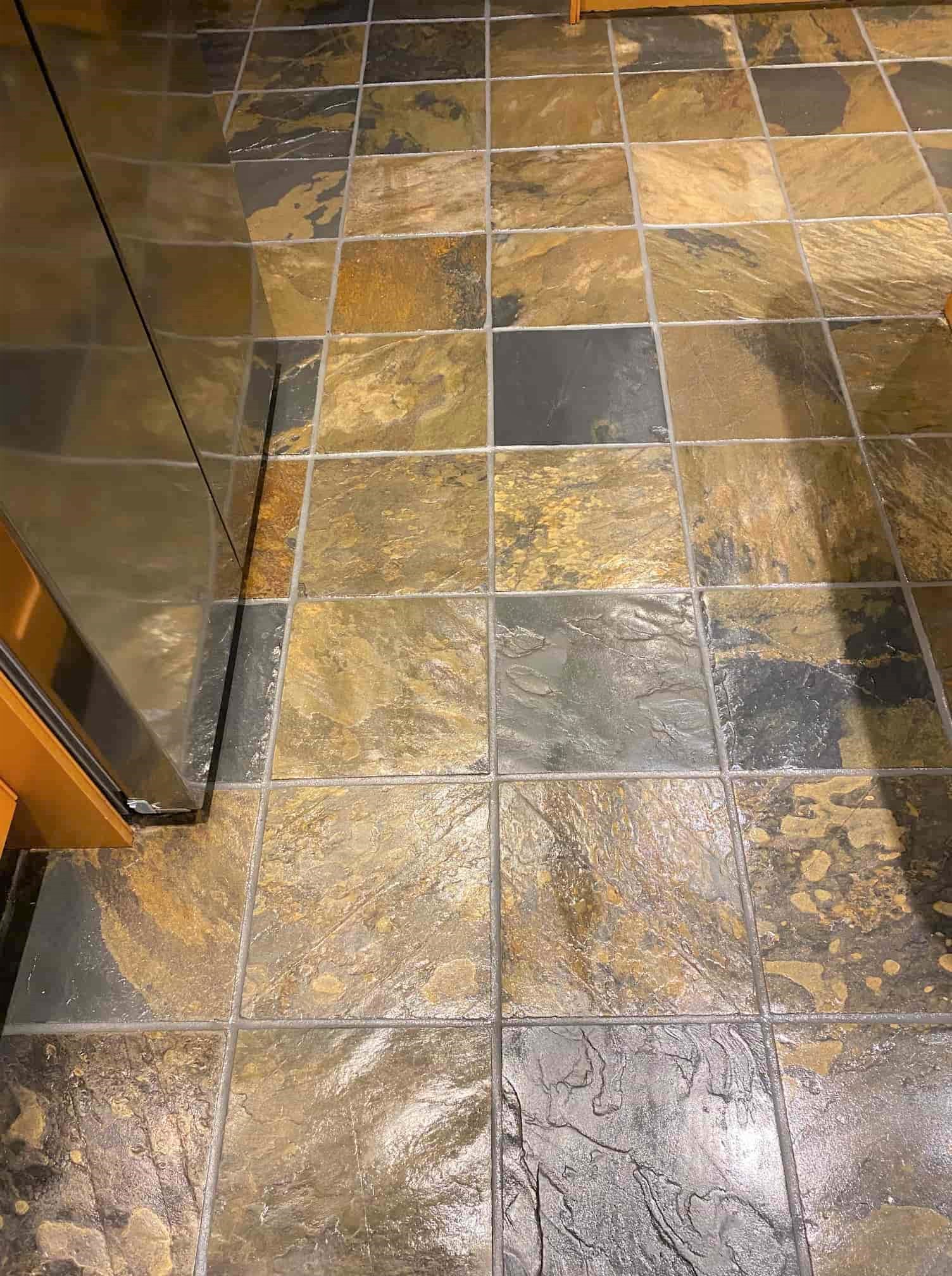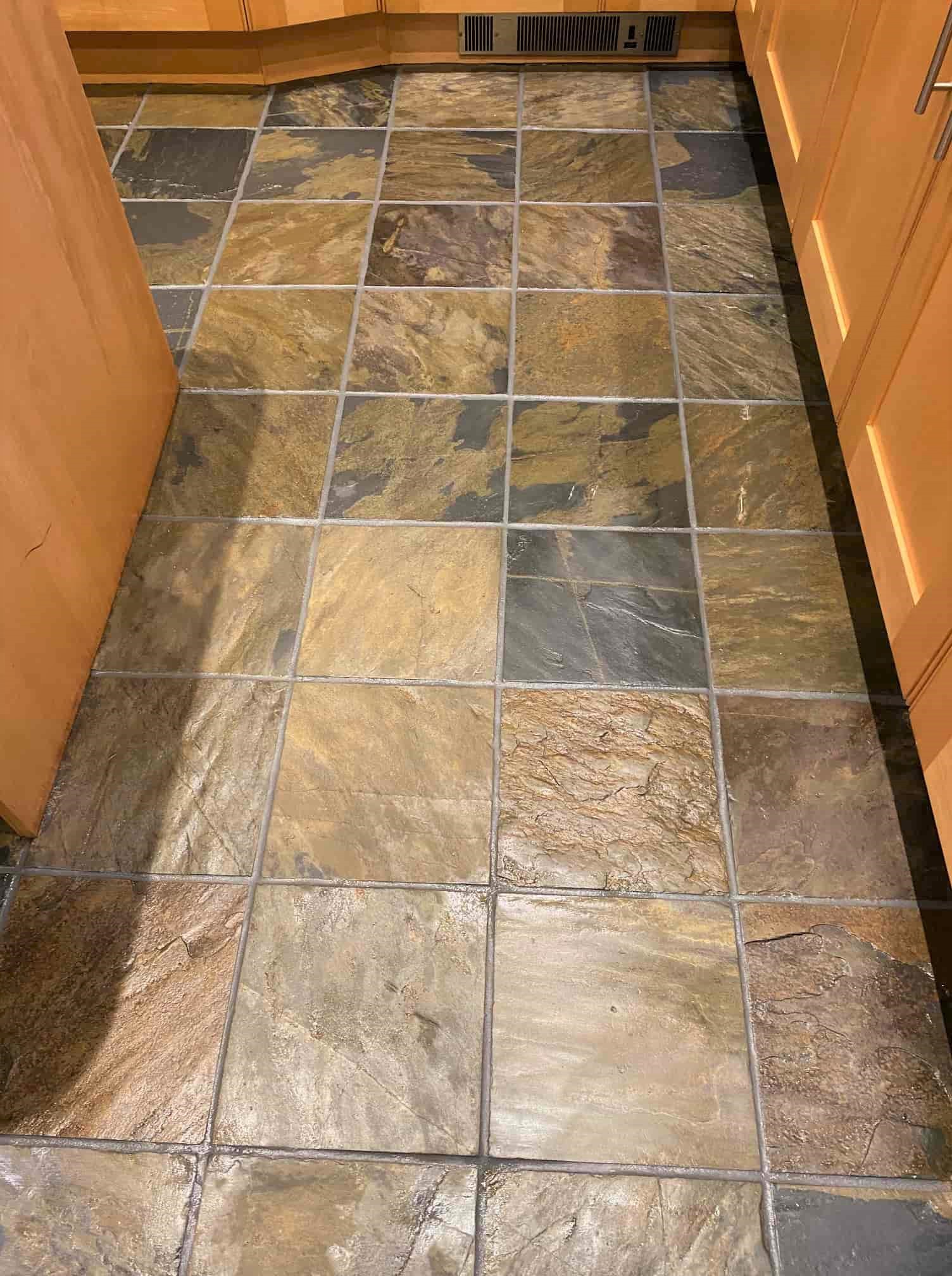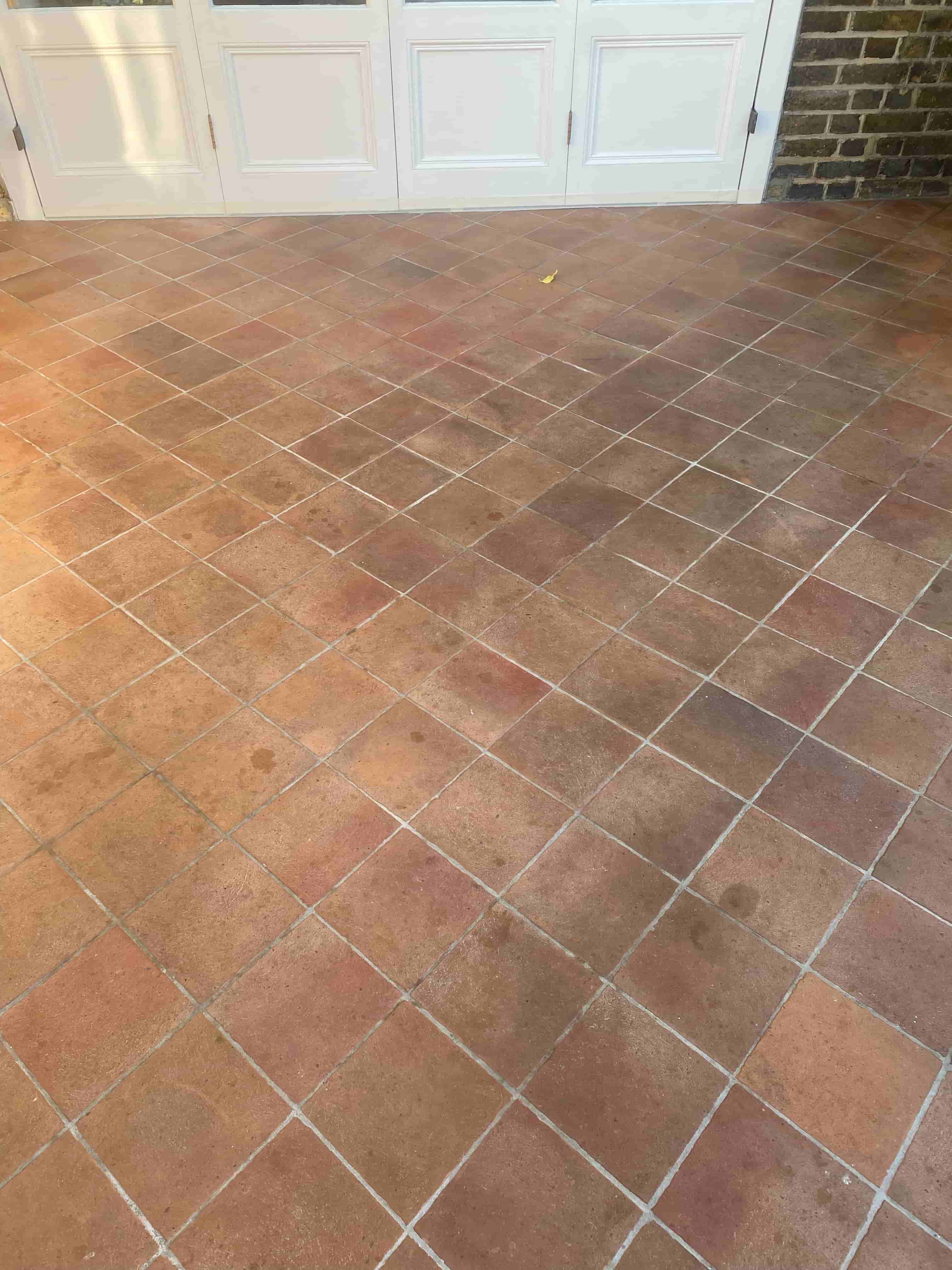Ceramic Tile and Grout Refreshed in a Sidcup Bathroom
Details below of a Ceramic tiled bathroom I recently refreshed at a property in Sidcup. The owner had booked a painter to decorate their house when they realised the bathroom tiles would let the overall finish down. Not wanting to have the cleaning done after the painting of the bathroom I was asked if I could do the work before the decorator started work in the bathroom.

The tiles were ceramic laid in 30cm square tiles and these are usually very easy to maintain however in this case it was the grout and the silicone sealant where the work was needed. This sort of work can be completed in less than a day so I was able to find a space between two larger jobs I had planned.
 |
 |
Deep Cleaning Bathroom Tile and Grout
I started by brushing Tile Doctor Oxy Gel on the wall tile and grout. This is a strong alkaline tile and grout cleaner, which being a gel clings well to vertical surfaces. This is important as we find these cleaners work best if allowed to dwell and soak in for a good ten minutes first.
The Gel was then scrubbed into the tile and grout by hand and then rinsed of with a high-pressure steam cleaner. The next step was to use Tile Doctor Duo Clean on all the grout lines. Duo Clean is a chlorine-based cleaner to remove mould and black spots. I sprayed it on and scrubbed in before leaving for ten minutes. I then sprayed and scrubbed the black marks again before rinsing with my steam cleaner.
During this process I also removed all the mastic sealant from around the bath and in the corner of the wall tiling. When the mastic was removed and debris cleared away, I treated the exposed areas to more Duo Clean to get them clean as possible.
Although the grout responded well to the treatment there were still dark patches in places. I had explained to the customer that this may be the outcome but not to worry as I did have a plan B if needed.
Grout Colouring Bathroom Wall Tiles
Once the tiles were dry, I started on Plan B which involved applying a Tile Doctor Grout Colourant to the grout lines. I used a Limestone Grout Colourant which matched very well with the tile and once complete was very difficult to detect. The colourant forms an epoxy barrier over the grout making it much easier to keep clean going forward.
Last step was to apply a fresh bead of mastic silicone sealant along between the bathtub and the tile and along the edges of the wall tiling.

Once done the bathroom was transformed and looked like a new installation. Also, the job was completed on time and ready for the decorator to come in and do his bit.
 |
 |
Bathroom Tile Renovation in Southeast London
Ceramic Tile and Grout Refreshed in a Sidcup Bathroom Read More »



